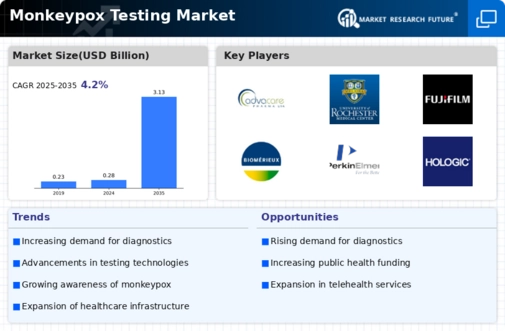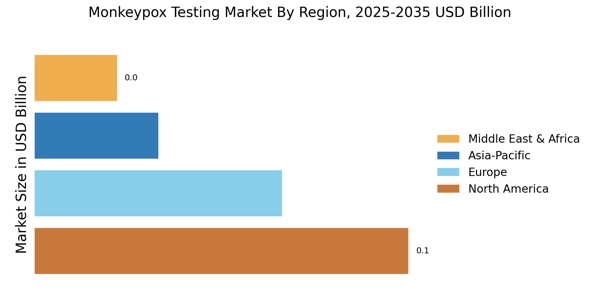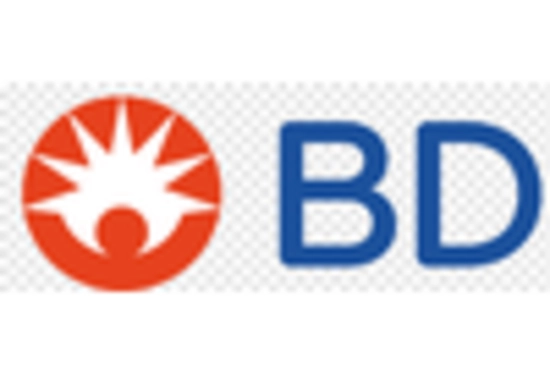Emerging Diagnostic Technologies
The emergence of innovative diagnostic technologies is reshaping the Monkeypox Testing Market. Advancements in molecular biology and biotechnology are leading to the development of more sensitive and specific testing methods. Techniques such as polymerase chain reaction (PCR) and next-generation sequencing are becoming increasingly prevalent in the detection of monkeypox. These technologies offer rapid results and improved accuracy, which are essential for effective disease management. As healthcare providers seek to adopt these advanced testing solutions, the market is poised for growth. The integration of cutting-edge technologies into testing protocols not only enhances the efficiency of monkeypox detection but also positions the Monkeypox Testing Market at the forefront of infectious disease diagnostics.
Regulatory Support and Guidelines
Regulatory support and the establishment of guidelines for monkeypox testing are pivotal in shaping the Monkeypox Testing Market. Health organizations and regulatory bodies are actively formulating protocols to ensure the availability and reliability of testing methods. This regulatory framework not only enhances the credibility of testing solutions but also encourages manufacturers to innovate and comply with safety standards. As a result, the market is likely to experience an influx of new testing technologies and methodologies. Furthermore, the endorsement of specific testing procedures by health authorities can lead to increased adoption among healthcare providers, thereby driving market growth. The alignment of testing practices with regulatory expectations is essential for the Monkeypox Testing Market to thrive.
Rising Incidence of Monkeypox Cases
The increasing incidence of monkeypox cases has emerged as a primary driver for the Monkeypox Testing Market. Reports indicate that the number of confirmed cases has risen significantly in various regions, prompting health authorities to prioritize testing. This surge in cases necessitates the development and distribution of effective testing solutions, thereby expanding the market. As healthcare systems strive to manage outbreaks, the demand for rapid and accurate testing methods is likely to grow. The urgency to identify and isolate cases to prevent further transmission underscores the critical role of testing in public health strategies. Consequently, the Monkeypox Testing Market is expected to witness substantial growth as stakeholders respond to the rising need for testing capabilities.
Global Health Initiatives and Funding
The Monkeypox Testing Industry. Various organizations are allocating funds to enhance surveillance and testing capabilities for monkeypox. These initiatives often focus on strengthening healthcare infrastructure, particularly in regions where monkeypox is endemic. The financial support provided by international health organizations enables countries to improve their testing capacities, thereby facilitating early detection and response to outbreaks. This proactive approach not only aids in managing current cases but also prepares healthcare systems for potential future outbreaks. Consequently, the Monkeypox Testing Market is likely to benefit from increased funding and resources dedicated to enhancing testing capabilities.
Investment in Research and Development
Investment in research and development (R&D) is a crucial driver for the Monkeypox Testing Market. As the understanding of monkeypox evolves, there is a growing need for innovative testing solutions that can provide rapid and accurate results. Increased funding from both public and private sectors is facilitating the development of advanced diagnostic tools. This investment is likely to lead to breakthroughs in testing technologies, such as molecular diagnostics and point-of-care testing. The emphasis on R&D not only enhances the effectiveness of testing but also contributes to the overall growth of the market. As new testing methods are introduced, the Monkeypox Testing Market is expected to expand, catering to the evolving needs of healthcare providers and patients alike.


















Leave a Comment